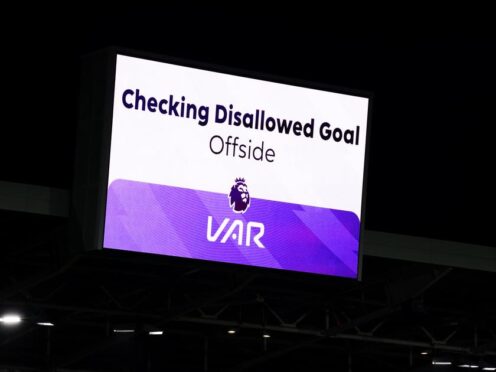The Premier League will use semi-automated offside technology before the end of the year.
Clubs unanimously agreed to introduce the technology next season at a meeting of top-flight teams on Thursday, which sources say is expected to cut the average length of a VAR check for offside by 31 seconds.
The Premier League said the intention was to introduce the technology after one of the autumn international breaks – so as early as September or as late as November.
Premier League clubs have unanimously agreed to the introduction of Semi-Automated Offside Technology from next season
It will provide quicker placement of the virtual offside line and high-quality graphics to ensure an enhanced broadcast and stadium experience
— Premier League (@premierleague) April 11, 2024
“The technology will provide quicker and consistent placement of the virtual offside line, based on optical player tracking, and will produce high-quality broadcast graphics to ensure an enhanced in-stadium and broadcast experience for supporters,” a league statement said.
Football’s global governing body FIFA first used semi-automated offside technology at the 2022 men’s World Cup in Qatar.
It is understood the intention is also to use the technology for FA Cup ties next season which are hosted by Premier League clubs, and for the semi-finals and final at Wembley.
The Premier League has not disclosed the technology partner it will work with, with no contracts understood to have been signed yet.
The move should increase confidence in decision-making and increase the likelihood that no potential offsides are missed by the VAR.

Should the technology fail, manual crosshair placement will still be available as a back-up.
Referees will still need to make calls themselves on subjective elements, such as whether a player in an offside position is interfering with play, or whether a player is onside where a defensive player has touched the ball and the contact has been deemed deliberate.
Extensive testing and analysis of the new technology has been conducted this season, it is understood.
Referees body Professional Game Match Officials Limited (PGMOL) has not commented on the move but is understood to be fully supportive.
Its chief refereeing officer, Howard Webb, is understood to have made a presentation at Thursday’s clubs meeting.
